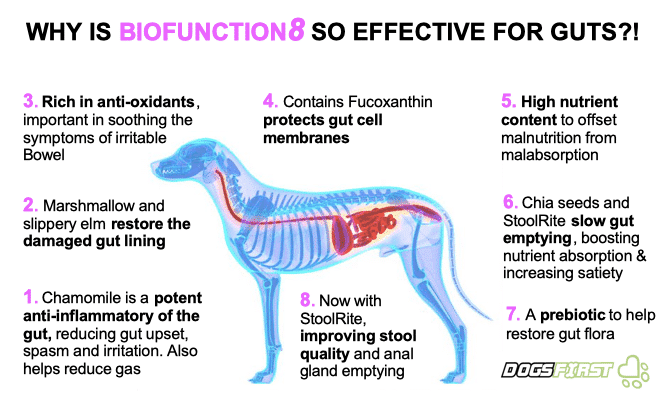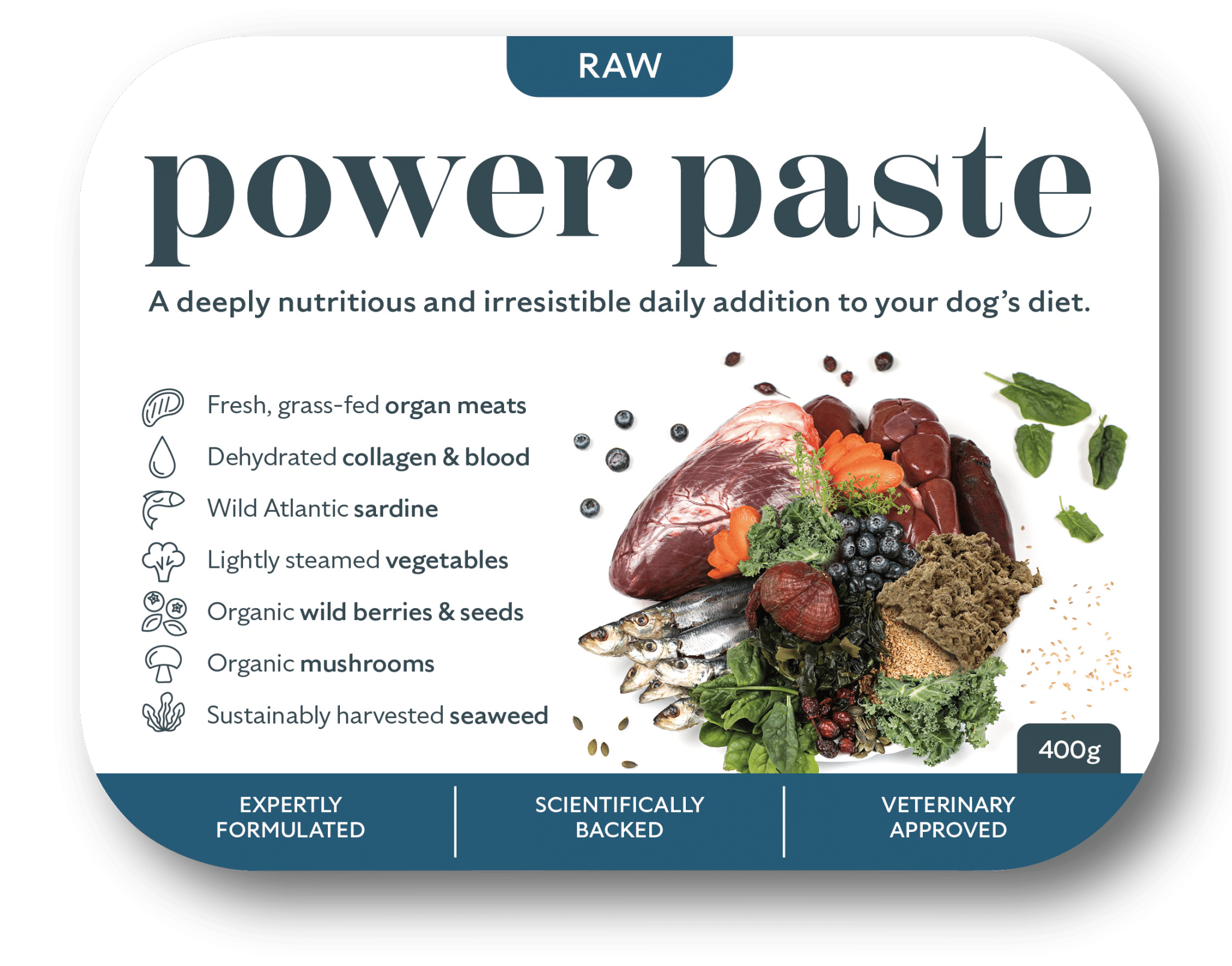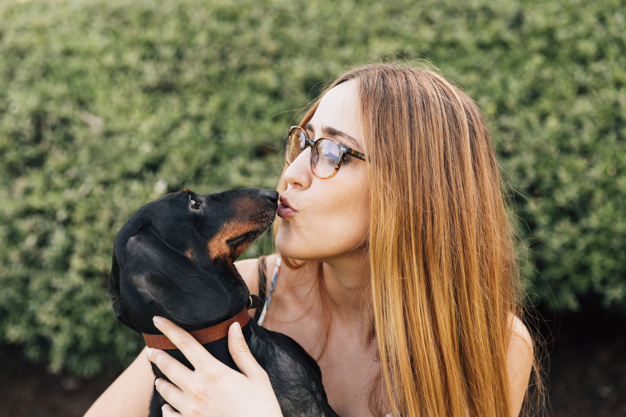Safer Alternatives To Neutering Dogs

Our article on neutering last year is far and away our most successful article to date. Heavily supported by numerous independent studies, it has been shared by over 15,000 people on Facebook and read by over 80,000 dog owners. In very short the article highlighted the negative health implications of neutering your dog before they are fully grown, adults. If you missed it you should check it out (the risks of neutering dogs).
The feedback from the post has been very largely positive. It’s hard to argue with cold hard facts when they are supported with numerous, independent studies in that article. One question many had was what were the safer alternatives to major surgery for preventing unwanted pregnancies in dogs. I neglected to consider this in the article though it was long enough already!
As far as I can see, there are two neutering alternatives in dogs available – less-invasive surgery and pills.
Ovary-Sparing Surgery For Dogs

The ovaries, like the testicles, are very vital organs, with an importance that stretch far beyond sexual reproduction. This is why we do not consider their removal in a pre-pubescent human female unless absolutely necessary. As our first article on neutering highlights, the sex organs produce a range of hormones that, among other things, conduct your orchestra of growth, muscle mass and even behaviour. Chopping this out BEFORE the growth period is not without side effects for your pet, so it’s a big decision that requires some thought.
One method of female dog sterilisation is called an ovariohysterectomy, or OVA, which removes both the ovaries and the uterus. This is very major surgery for a dog or human (certainly a pre-pubescent one) and it is less favoured as a result. Thankfully there are other options available, just not by all vets.
An ovarioectomy (OVE) is where the uterus is left in place, only the ovaries are removed. This has been used for many years in Europe. By leaving the uterus in place it means a much less complicated surgery, with a speedier (and likely less painful) recovery. While still achieving the goals of spaying and prevention of “heat” cycles (and the various reproductive diseases that you were concerned for in your pet) this option still removes sex hormone production, often before their main growth period where they are critical to safely guiding your pup through the rest of her growing process, if you read the first post on (please read up more on neutering here). So it’s not recommended, certainly in a pubescent animal.
So now we are focusing on ways of preserving the ovaries hormonal function but removing their baby-making tendencies. This is called an Ovary Sparing Spay (OSS).
Initially, OSS was simply a form of tubal ligation where the oviducts (the path between the ovaries and the uterus) are snipped, thus preventing the egg from getting to the uterus or coming in contact with sperm. The problem with this, again, is that by blocking off the road, not only do you stop the truck load of eggs from passing through but everything else that travels on that road (the sex hormones).
But then I was recently introduced to the work of Dr. Michelle Kutzler, an expert in animal reproduction, who was speaking with another legendary vet Dr. Karen Becker on Mercola who highlighted there is another way:
Instead of ligating the ovarian pedicle between the ovary and the dorsal body wall (instead of ligating the ovarian vessels), you’re doing the ligation between the ovary and the uterine horn or across the uterine tubes.”
I’m barely hanging on here too, but in essence, this vet is safely cutting off the supply of eggs from the ovary but maintaining the flow of sex hormones from said organ. And according to the “The Ovary Sparing Spay and Vasectomy Info Group”, this seems to be doing the job. Most agree that hormone production continues after OSS as evidenced by signs of heat (but with no bleeding – no working uterus), seasons and attractiveness to male dogs.
How great is this?!!!
Sadly, this method is still new and as such treated with much suspicion by the veterinary community. The result is less investigation where it matters and literature falling behind. I can find no supportive works of any value for this method as of yet. If anyone else does, please send it on.
For more on this work, please go straight to the source, Dr Kutzler’s website Parsmus.org where a lengthy, detailed article and video demonstration of the OSS procedure is provided
With tubal ligation your dog will continue to go into heat and can mate with male dogs, but no pregnancy will result. This route is certainly preferred though not many vets provide this service. You need to call and discuss or find one that does.
A demonstration of uterus removal with ovary sparing is conducted below by Dr. M Kutzler.
Birth Control Pills for Dogs?
Two oral birth control products are available for dogs, Mibolerone and Ovaban (though now called something else). You can only source these through your vet but most vets do not stock them. Your vet will advise you on how to use these drugs proparly but in short you cannot start to use each drugs until your bitch has had one season, so there will be a three week window where your dog will still be able to reproduce, requiring some responsibility on your part.

Mibolerone must be administered to the bitch on a daily basis for thirty days prior to coming into heat for them to be effective. Needless to say predicting the beginning of a bitch’s cycle is difficult, so it will be challenging to know when to start treatment. Documented side effects include liver damage and personality changes.
Another option is more like the human pill (in dogs a popular one is called Ovaban though many similar generic products are becoming available). They function in a similar way to the hormone progesterone. It can be used to delay estrus, for treatment of false pregnancy (blogged about that last week), and for some skin and behavioral disorders. Essentially you use Ovaban as soon as the heat cycle begins and it will delay the heat for the next four to six months. Repeated use for more than two consecutive heat cycles is not recommended. Reported side effects include pyometra, mammary gland enlargement and cancers, diabetes mellitus, adrenal gland suppression, behavioral changes and foetal defects if administered to pregnant animals.
The advantages of going the pill route is that it is reversible and safer for a dog with a serious medical condition whereby major surgery could finish him off.
Never give human contraceptive pills. Asides being ineffective to disruptive (due to the difference in hormones and the reproductive cycle), human birth control pills can even be toxic to dogs, given enough of them.
Implants For The Girls (And Boys?)
A client on to us this morning mentioned she was looking into an implant for her dog as she was getting in a house mate for him to play with (a female version of himself, and a close cousin, not close enough though that he wouldn’t try it on). The client rang her local vet and they agreed this was something they could pursue.
These implants (controlled release devices) are available for boys and girls. They are inserted subcutaneously and studies are proving that it offers long-term contraception (just over a year) in female dogs and cats, and, possibly, male dogs. Two common types are called Gonazon and Suprelorin. Both have “no side-effects”, which is practically impossible as this can barely be achieved with saline solution or distilled water. Trials are conducted in-house.
There are a range of other potions and pills that you and your vet can consider, though these are outside our remit to comment upon. You can find out more on this veterinary medicine site.
Chemical Castration and “The Snip” for Him
Often called “zeutering” chemical castration involves an intra-testicular injection (flinch) that contains zinc gluconate. It causes testicular sclerosis with permanent sterility and surprisingly requires no anaesthesia (I’d personally prefer a little). A large field trial to evaluate one product Neutersol involved 10,000 dogs in Mexico. Some dogs experienced moderate pain in the first 12 hours after injection. 2.6% of the dogs had severe ulcers at the injection site though this was “largely down to technique”. In another study on the Galapagos, 3.9% of 103 dogs given zinc gluconate developed painful, necrotising injection site reactions. The dogs that experienced zinc gluconate reactions were large in size who received the near maximum-volume doses. Unfortunately, this method of castration destroys the testes, hence all hormone production ceases, which is not what you want.
It is possible to perform a vasectomy on a male dog (the “snip”) whereby male dogs can have their vas deferens tied, or injected with a polymer gel. However, like hysterectomies and tubal ligations for female dogs, it is very rarely done, which is a damn shame as it leaves the testes there to do their thing during puberty and there after. Moreover, they’re real safe and 100% effective.
Vaccines for Both…
Various vaccination ideas that target specific parts of the reproductive cycle are being explored in dogs and other animals but none yet have come to market.
Alternatives to Neutering Dogs: Conclusion
Again, as with our previous neutering article, there are always options (and there are always side effects). Please explore these options with your local vet. Sadly it seems not many vets will be able to provide you with any of these solutions but we are looking for you guys to make enquiries with your local vet anyway. When zoo veterinarians are using vasectomy and tubal ligation on their animals and human doctors prefer vasectomy and tubal ligation over major surgery, why should we use out of date castration on our beloved pets? The more people that ask for these safer alternatives the more inclined your vet will be to look into and hopefully provide the service. In the very least it may prompt them to get better versed on the whole early-neutering debate (starting with our article, of course!), should they not be already.
For more please see Neutering in Dogs – The Unspoken Risks.















